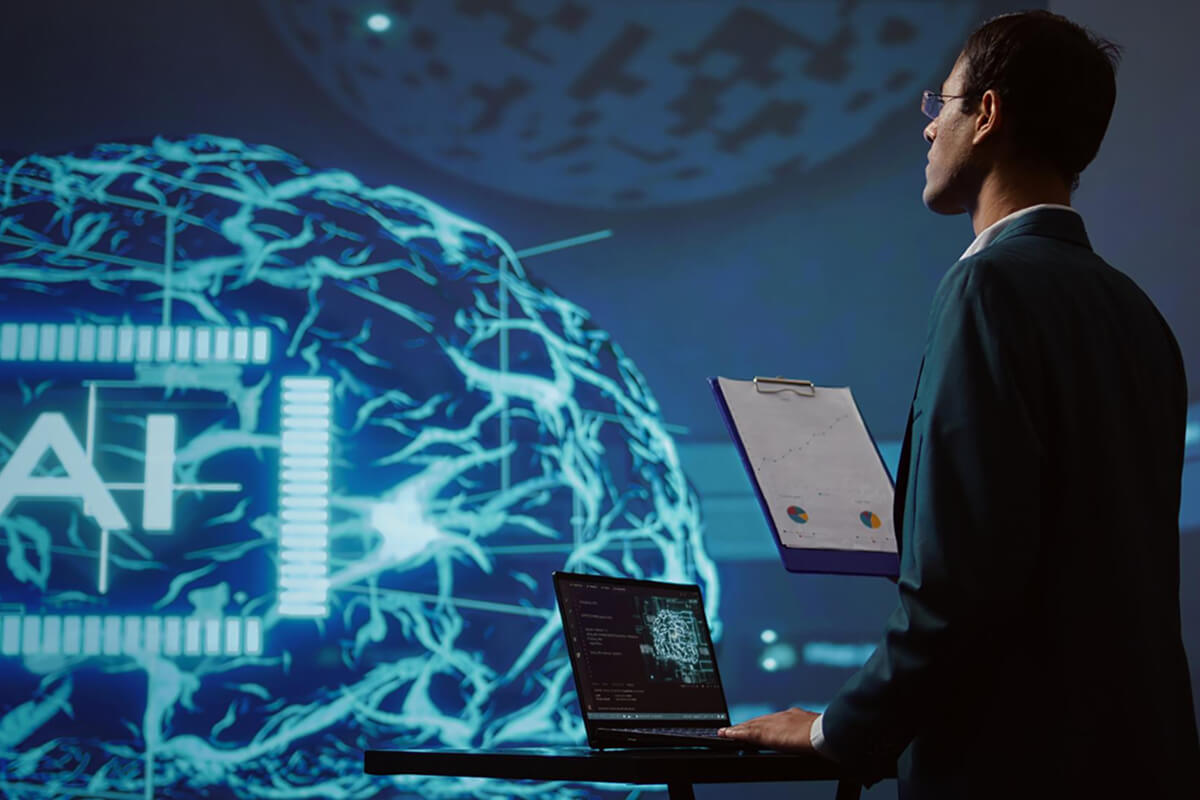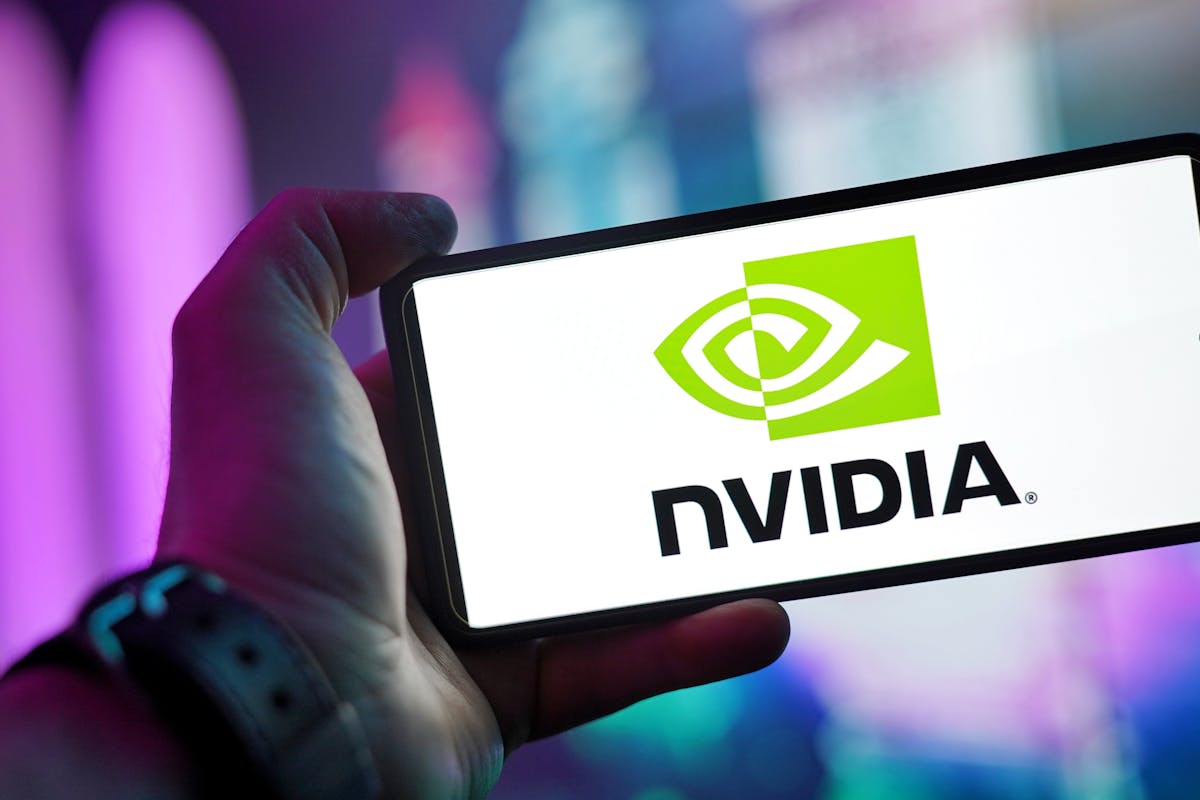AI in Entertainment: From Content Creation to Recommendation Systems
Artificial Intelligence (AI) has become one of the most transformative technologies in recent years, and its impact on the entertainment industry is profound. AI is not only changing the way content is created and produced but is also revolutionizing how it is consumed and distributed. From the use of AI in music composition and scriptwriting to sophisticated recommendation systems that tailor content to individual users, the entertainment industry is entering an era where AI is shaping every aspect of the experience.
In this extensive blog, we will dive deep into the multifaceted role of AI in entertainment, covering its application in content creation, audience engagement, and the development of recommendation systems. Furthermore, we’ll examine the challenges, ethical concerns, and future trends that AI brings to this rapidly evolving industry.
1. AI in Content Creation: Redefining Creativity
AI’s ability to generate, enhance, and assist in creative processes marks a significant leap in the entertainment landscape. While the idea of machines participating in creativity may once have seemed far-fetched, AI is now a key player in many areas, from music composition and video editing to scriptwriting and digital animation.
a. AI-Generated Music and Art: A New Creative Frontier
AI-driven systems like OpenAI’s MuseNet and Jukedeck, as well as Google’s DeepDream, are making strides in producing original music, artwork, and visual content. These algorithms are trained on vast datasets of musical scores or art collections, learning the structures, patterns, and techniques that have defined human creativity for centuries. By analyzing these, AI systems can compose music, generate paintings, or even design video game environments that are indistinguishable from human-made works.
MuseNet, for example, can generate complex music tracks that span multiple genres and styles, blending classical symphonies with modern electronic beats. AI-generated music has found applications in creating background scores for films, video games, advertisements, and even live performances. It provides an opportunity for creators to experiment with new sounds, and musicians can use AI as a co-creator to augment their own compositions.
In visual arts, AI tools can paint images, alter photos, or create entirely new art forms. DeepDream, for instance, creates surreal, dream-like images based on existing photos by enhancing patterns and textures through convolutional neural networks. Artists are now using AI to push the boundaries of visual expression, creating works that challenge traditional notions of what art can be.
b. Scriptwriting and Storytelling: AI as a Co-Author
AI’s role in storytelling is becoming increasingly prominent, with algorithms like GPT-4 (the technology behind this text) and tools like ScriptBook offering assistance to writers and filmmakers. While AI may not yet be able to replace human storytellers entirely, it can generate ideas, suggest plotlines, and even write dialogue with a remarkable level of coherence and creativity.
AI-powered tools analyze past scripts, books, and successful film plots to offer insights on what might appeal to an audience. This data-driven approach enables creators to make informed decisions about plot structure, character development, and pacing. In some cases, AI is even used to predict the commercial success of a screenplay before production begins. For example, ScriptBook’s algorithms evaluate scripts and predict how well they will perform based on narrative elements, character arcs, and dialogue.
In the future, we might see AI creating entire scripts, from indie films to major blockbusters. Though human oversight will still likely be required for nuance and emotional depth, AI is already proving itself as a valuable tool in the early stages of story development.
c. Deepfakes and CGI: Enhancing Visual Storytelling
Deepfake technology and computer-generated imagery (CGI) are two of the most exciting applications of AI in visual storytelling. Deepfakes use AI to create realistic simulations of people’s faces and voices, often with stunning accuracy. While deepfake technology raises ethical concerns, such as the potential for misuse in misinformation or identity theft, the entertainment industry is leveraging it to great effect.
One famous example is the use of CGI and deepfakes in Rogue One: A Star Wars Story, where the face of the late actor Peter Cushing was digitally recreated for the character Grand Moff Tarkin. Similarly, younger versions of characters are frequently generated using AI, as seen with The Irishman, which used CGI to de-age actors like Robert De Niro and Al Pacino.
AI’s ability to create hyper-realistic characters and environments is changing how films are produced. It allows directors to break free from the limitations of practical effects, opening up new possibilities for storytelling. As AI technology improves, we may see entire performances rendered digitally, with virtual actors replacing physical ones in certain roles.
d. AI in Animation and Visual Effects: Streamlining Production
In the world of animation and visual effects (VFX), AI is speeding up production processes, allowing studios to create more complex scenes with fewer resources. Traditional animation techniques often require hundreds of hours of labor, but AI can automate many aspects of this work.
For instance, AI-driven software can assist animators by automatically generating in-between frames in a process known as “tweening.” This reduces the workload for animators and speeds up the production of animated sequences. In VFX, AI can simulate realistic water, fire, and other natural phenomena that would be time-consuming and expensive to produce manually.
Studios like Pixar and DreamWorks are experimenting with AI tools to improve their workflows and enhance the quality of their films. The integration of AI in animation not only reduces production costs but also enables creators to focus on the more artistic elements of their projects.
2. AI in Personalization and Recommendation Systems: Enhancing User Experience
The way audiences consume entertainment content has changed dramatically in recent years, largely due to the rise of streaming platforms like Netflix, YouTube, and Spotify. These platforms rely heavily on AI to personalize content recommendations, making it easier for users to discover new shows, movies, music, and more.
a. Recommendation Engines: The Backbone of Modern Entertainment
Recommendation systems are perhaps the most visible application of AI in entertainment today. These algorithms analyze user behavior—such as what shows they’ve watched, what songs they’ve listened to, and how they’ve rated content—to make personalized recommendations.
Platforms like Netflix use a combination of collaborative filtering, deep learning, and content-based algorithms to curate a list of recommended shows and movies for each individual user. Collaborative filtering analyzes the preferences of similar users to suggest new content, while content-based filtering looks at the attributes of shows or movies (such as genre, director, and cast) to match them with users’ tastes.
Spotify employs similar AI-driven techniques to generate playlists like “Discover Weekly” and “Daily Mix.” These playlists are tailored to each user’s listening habits, taking into account not only the genres and artists they prefer but also factors like tempo, key, and mood.
YouTube’s recommendation engine, which powers the platform’s “Up Next” feature, relies on AI to keep users engaged by serving up videos based on their watch history and engagement patterns. The more a user interacts with the platform, the better the algorithm becomes at predicting what content will keep them watching.
b. AI-Driven Content Discovery: From Viral Trends to Niche Genres
In addition to recommending content based on past behavior, AI is also helping users discover new and trending content. Platforms like TikTok have become famous for their ability to surface viral videos based on user preferences and broader trends in user-generated content. TikTok’s “For You” page is powered by an AI algorithm that analyzes a variety of factors, such as how long users watch certain videos, whether they like or share them, and even how much of the video they replay.
This approach ensures that content from unknown creators has the potential to go viral, breaking down traditional barriers to entry in the entertainment industry. AI-driven content discovery tools are empowering smaller creators, allowing them to reach a wider audience without the need for expensive marketing campaigns.
Beyond trending content, AI is also instrumental in helping users explore niche genres and hidden gems that they might not have found otherwise. For example, Netflix’s algorithm categorizes content into thousands of micro-genres, allowing users to find highly specific films or series based on obscure tastes.
3. AI in Virtual and Augmented Reality: The Future of Immersive Entertainment
As virtual reality (VR) and augmented reality (AR) technologies continue to evolve, AI is playing a pivotal role in creating more immersive and interactive entertainment experiences. These technologies are redefining how we engage with games, live events, and even social media, offering new ways to explore and participate in digital worlds.
a. Procedural Generation: Creating Infinite Virtual Worlds
One of AI’s most exciting applications in VR and AR is procedural generation, where algorithms create vast, dynamic virtual environments that evolve in real-time. Games like No Man’s Sky have already demonstrated the power of procedural generation, with AI creating millions of planets, each with its own unique ecosystems, landscapes, and weather patterns.
AI algorithms analyze a set of rules and parameters to generate environments that feel organic and lifelike. This allows developers to create expansive worlds without manually designing every detail. In VR experiences, AI-generated environments can adapt to the user’s actions, creating a more interactive and immersive experience.
b. Personalizing VR and AR Experiences
AI can also personalize VR and AR content based on user preferences. For instance, in a virtual concert, AI can analyze the audience’s reactions and adapt the performance in real-time, changing the lighting, sound, or even the virtual set to enhance the experience.
In AR, AI can overlay personalized information onto the real world, creating interactive shopping experiences, educational tools, or even personalized tours of museums or historical sites. The possibilities for AI in VR and AR are virtually limitless, as these technologies become more sophisticated and integrated into everyday life.
4. AI in Audience Engagement and Marketing: Connecting with Fans
AI isn’t just transforming content creation and distribution—it’s also revolutionizing the way entertainment companies engage with their audiences and market their products. From chatbots to predictive analytics, AI is helping entertainment brands connect with their fanbases in more personalized, efficient, and insightful ways.
a. AI-Powered Chatbots: Engaging Fans in Real-Time
Chatbots, powered by AI, have become a valuable tool for entertainment companies to engage with fans and promote content in creative ways. These chatbots can simulate conversations with fans, offering them personalized experiences that enhance engagement with movies, TV shows, or music.
For instance, movie studios have launched AI chatbots that allow users to “chat” with characters from upcoming films. These bots can answer questions about the plot, offer teasers, and build excitement leading up to the release. Similarly, music artists and bands can use AI chatbots to interact with fans on social media platforms, sending personalized messages, concert updates, and exclusive content.
AI chatbots are also being used to provide customer support, answering questions about subscription services, ticket sales, or technical issues. This type of automation enhances the customer experience while freeing up human agents for more complex inquiries.
b. Sentiment Analysis: Gauging Audience Reactions in Real-Time
Sentiment analysis is another area where AI is making waves in entertainment marketing. By processing vast amounts of data from social media platforms, online forums, and user reviews, AI-powered sentiment analysis tools can help entertainment companies gauge how audiences feel about specific content.
This data allows studios, record labels, and game developers to make real-time adjustments to their marketing strategies. For example, if a new movie or game is receiving mixed reviews, AI-driven sentiment analysis can pinpoint which aspects of the content are being praised or criticized, allowing creators to address concerns before the content becomes widely available. Moreover, this technology can be used during live events, such as concerts or esports tournaments, to provide instant feedback on audience engagement and emotional responses.
c. Predictive Analytics in Marketing: Optimizing Campaigns
AI-driven predictive analytics is transforming marketing in the entertainment industry by offering data-driven insights into audience behavior and preferences. Entertainment companies use AI to predict the success of marketing campaigns and allocate resources where they are most likely to yield results.
For example, AI can analyze previous marketing efforts, box office data, and audience engagement to predict the performance of an upcoming movie or music release. Based on these insights, companies can tailor their promotional strategies, ensuring that their content reaches the right audience at the right time.
Predictive analytics also plays a significant role in optimizing digital ad placements. AI algorithms can track which ads are performing best on different platforms, adjusting ad targeting in real-time to maximize reach and engagement. This level of precision ensures that marketing budgets are spent effectively, and content creators can focus on reaching audiences who are most likely to be interested in their work.
d. AI in Social Media Marketing: Automating Engagement and Insights
Social media has become an essential marketing tool for the entertainment industry, and AI is helping companies manage and optimize their presence on these platforms. AI-powered tools can automate tasks such as posting content, responding to comments, and engaging with followers, saving time and allowing marketers to focus on higher-level strategies.
AI tools like Hootsuite and Sprout Social use machine learning to analyze audience behavior on social media, helping entertainment brands determine the best times to post, what types of content resonate most, and which campaigns are driving the highest levels of engagement. These tools also provide detailed analytics that show how users are interacting with content, allowing brands to fine-tune their strategies for maximum impact.
AI’s ability to track trends and identify key influencers also plays a crucial role in viral marketing campaigns. By analyzing social media conversations and identifying trending topics, AI can help entertainment companies launch timely campaigns that tap into the cultural zeitgeist.
5. Challenges and Ethical Considerations of AI in Entertainment
While the benefits of AI in entertainment are vast, the integration of AI also presents several challenges and ethical concerns. As AI becomes more embedded in the creative and marketing processes, the industry must grapple with issues related to ownership, bias, privacy, and the potential misuse of powerful AI tools like deepfakes.
a. Intellectual Property and Creativity: Who Owns AI-Generated Content?
One of the most pressing challenges in AI-driven content creation is the question of intellectual property. When an AI algorithm generates music, scripts, or artwork, who owns the rights to that content? Traditional copyright laws are built around human authorship, and the rise of AI-generated works is challenging these legal frameworks.
Some argue that the creators of the AI systems should hold the copyright, while others believe that ownership should be attributed to the user who input the data or provided the creative direction. There’s also the question of whether AI-generated works should be eligible for copyright protection at all, given that they are produced by machines rather than human minds.
This lack of clarity could lead to legal battles as AI-generated content becomes more prevalent, and new laws may need to be established to address these issues.
b. Deepfakes and Ethical Concerns: Navigating the Risks of AI-Generated Media
The rise of deepfake technology is both a boon and a risk for the entertainment industry. While deepfakes offer exciting opportunities for visual effects and character creation, they also raise significant ethical concerns. Deepfakes have been used to create convincing but false videos of real people, leading to fears about the spread of misinformation and the potential for identity theft.
In entertainment, deepfakes can blur the line between reality and fiction in ways that could be both thrilling and dangerous. For instance, using AI to recreate a deceased actor in a new film might delight fans, but it also raises questions about consent, legacy, and the ethical use of a person’s likeness after death.
To mitigate the risks, entertainment companies must establish clear ethical guidelines for the use of AI-generated media, ensuring that deepfake technology is used responsibly and transparently.
c. Bias in AI Algorithms: The Risk of Narrowing Perspectives
AI algorithms are only as good as the data they are trained on, and this can lead to issues with bias. In entertainment, recommendation systems can perpetuate biases by narrowing the types of content that users are exposed to. If an AI system is trained on data that reflects only popular genres or mainstream creators, it may overlook more diverse voices, marginalizing independent artists or content from underrepresented groups.
Bias in AI algorithms also extends to how content is marketed and distributed. If AI-driven marketing strategies favor specific demographics or reinforce stereotypes, they could limit the industry’s ability to reach a broader, more inclusive audience.
To combat these risks, companies must ensure that their AI systems are trained on diverse datasets and regularly audited for bias. By promoting inclusivity in AI-driven content discovery and marketing, the entertainment industry can ensure that AI enhances creativity without reinforcing harmful patterns.
6. The Future of AI in Entertainment: What’s Next?
As AI continues to evolve, its role in entertainment will only expand. The future promises even more sophisticated AI tools that will push the boundaries of what’s possible in content creation, distribution, and audience engagement.
a. AI-Generated Films and Interactive Content: The Next Frontier
One of the most exciting possibilities for AI in entertainment is the development of fully AI-generated films, video games, and interactive content. AI could eventually take on the role of director, producer, and editor, creating entire projects from start to finish without human intervention. Imagine a movie or TV show that adapts in real-time based on the viewer’s reactions or preferences—this level of personalization could be possible with advances in AI storytelling.
In the gaming industry, AI could enable more immersive and dynamic experiences by creating adaptive game environments that respond to player behavior. Games could evolve based on individual play styles, offering infinite possibilities for exploration and narrative development.
b. AI and the Metaverse: A New Era of Entertainment
As concepts like the metaverse gain traction, AI will play a crucial role in shaping these digital worlds. The metaverse, a collective virtual shared space that merges physical and digital realities, will require AI to generate, manage, and personalize massive amounts of content in real-time.
AI-driven avatars, procedurally generated worlds, and intelligent NPCs (non-player characters) will be essential to creating immersive, engaging experiences within the metaverse. Entertainment companies are already exploring how AI can enhance social interactions, live events, and even virtual economies within these digital spaces.
Conclusion
AI is undoubtedly transforming the entertainment industry, from how content is created to how it is delivered and experienced by audiences worldwide. As AI continues to evolve, its applications in entertainment will become even more sophisticated, enabling new forms of creativity, personalization, and engagement. However, along with the opportunities come challenges and ethical considerations that must be addressed to ensure AI’s role in entertainment is positive and responsible.
From AI-generated music and films to personalized recommendations and immersive virtual worlds, the future of entertainment is closely intertwined with AI. The industry must continue to innovate while also navigating the complexities of intellectual property, bias, and ethical use of AI. As we look ahead, it’s clear that AI will not only augment human creativity but also unlock new dimensions of storytelling, performance, and audience interaction, making the future of entertainment more dynamic and exciting than ever before.








